2018 POTTERY OF THE WORLD by the Mint of Poland
Back in the latter half of 2015, the Mint of Poland debuted a very unusual coin targeted at lovers of porcelain. As its base it took one of the mints regular 17.5 gram proof silver coins and attached to its front a tiny miniature replica of the extraordinarily expensive Qianlong Vase. Specially fired by a porcelain factory based in Cmielow, Poland, it was certainly something different and went on to win an award and spawn a sequel the following year. Quite a niche item, we didn’t expect to see many more of them. We stand corrected.
The Mint of Poland produces coins for quite a few countries, especially in Eastern Europe, and one of those is Armenia. A former Soviet republic and one of the world’s oldest Christian countries, Armenia regularly issues a reasonable number of silver coins, but usually, outside of some colour, quite traditional in execution. It seems they’ve decided to try something different and this new series called Pottery of the World, is definitely that.
Larger than the Qianlong Vase coin at a full troy-ounce, they also move away from the round shape to the square format which gives plenty of space for the main attraction. Each of the coins has in the centre of the reverse face, a porcelain miniature of a famous piece of pottery from one of five countries. As well as Armenia, of course, Ancient Greece, China, Russia and Iran are all represented with a coin. These are not generic miniatures, but replicas of actual historical pieces from various museums around the world.
Now we’re aware that pottery is a niche interest and that coins with items stuck to their face are an acquired taste, but there’s no denying these are pretty impressive items. The porcelain adornment is coloured to a high-standard and the struck background is patterned to suite the culture being showcased. Packaging is a sensible choice. The latex-skinned ‘floating-frame’ is more than flexible enough to accomodate the thickness of the coin and allows for an easy display. They come supplied in a themed cover sleeve.
GREEK POTTERY
Pottery holds a special place in the ancient Greek decorative and applied art. It is characterized by the diversity of clay vessels and the harmony of the graphic and vivid elements.
CHINESE POTTERY
The history of development of Chinese ceramics and its rich culture illustrate the centuries-old origin of pottery. The forms and colors of ancient clay objects created by Chinese craftsmen gradually took more elegant forms and delicate tints. Subsequently, due to improvements in clay processing technologies the porcelain emerged in China and marked the beginning of production of porcelain items.
Jingdezhen, a town in China’s Jiangxi Province, is known as the “Porcelain Capital” as it was built on a clay soil. Emperor Jingde decreed all the pieces made for court to be marked “made in the Jingde period” and subsequently the city changed its name to Jingdezhen.
The plate made during the reign of Dynasty Qin is an example of Jingdechian porcelain, painted with cobalt on a white background and over-glazed transparent layer depicting the dragon. The porcelain plate is preserved in the Xinjiang Museum (Henan Province, China).
IRANIAN POTTERY
The art of Iranian pottery contains the best traditions of Iranian sculpture, painting and architecture. Kashan is one of the centers of production of Iranian pottery. This settlement became known for innovative methods in the creation of pottery. Kashan is famous for having developed a special formula for double clay baking, which allowed Kashan to maintain the originality of the art of glazing. Ceramic slabs made of this type were widely spread in the 13th-14th centuries.
RUSSIAN POTTERY
The Imperial Porcelain Factory established in St. Petersburg by the decree of Empress Elizabeth I in 1744 is a large center of Russian ceramics production. A team led by Russian scientist D. Vinogradov, came up with their own porcelain formula, using the local clay features.
ARMENIAN POTTERY
The ancient clay objects found in the Armenian Highland refer to the 7th millennium BC. With gradual improvements in the potter’s craft ceramics acquired variety of forms and ornaments, thus giving rise to terracotta and colored ceramics. In the Middle Ages Dvin and Ani, the capitals of Armenia, were major centers of Armenian pottery. Here, the Armenian artisans made belt-garnished crockery and glazed faience.
OBVERSE
The obverse is common across the range and is a pretty packed in affair. In the centre sits the very cool looking national coat-of-arms. The shield in the centre depicts Mount Ararat with Noah’s Ark atop it in a central segment. Around that are four other segments containing the symbol of an old Armenian dynasty. The lion with cross at top left is from the Bagratuni Dynasty (7th-11th c AD), the double-headed eagle at top right from the Arsacid Dynasty that turned Armenia Christian in 301AD. At bottom-right is another lion with cross, which is the emblem of the Rubenid dynasty which ruled the region in the 12th and 13th centuries until conquered by the Turks and Mamelukes. Finally, at bottom-left are two eagles staring at each other – the ancient emblem of the Artaxiad Dynasty that ruled in the 1st century BC. The shield is sited in front of an eagle and lion. These were used in Armenian dynasties long before the adoption of Christianity.
Also on the obverse are a selection of national ornaments and a whole plethora of inscriptions in English and in Armenian. It’s a busy face, but packed with national imagery. I’d love to see a large face with just that central coat-of-arms filling it.
| SPECIFICATION (per coin) | |
| DENOMINATION | 1,000 Dram (Armenia) |
| COMPOSITION | 0.925 silver |
| WEIGHT | 31.1 grams |
| DIMENSIONS | 40.0 x 40.0 mm |
| FINISH | Proof |
| MODIFICATIONS | Porcelain insert, Colour, Laser tarnishing |
| MINTAGE | 2,000 |
| BOX / COA | Yes / Yes |


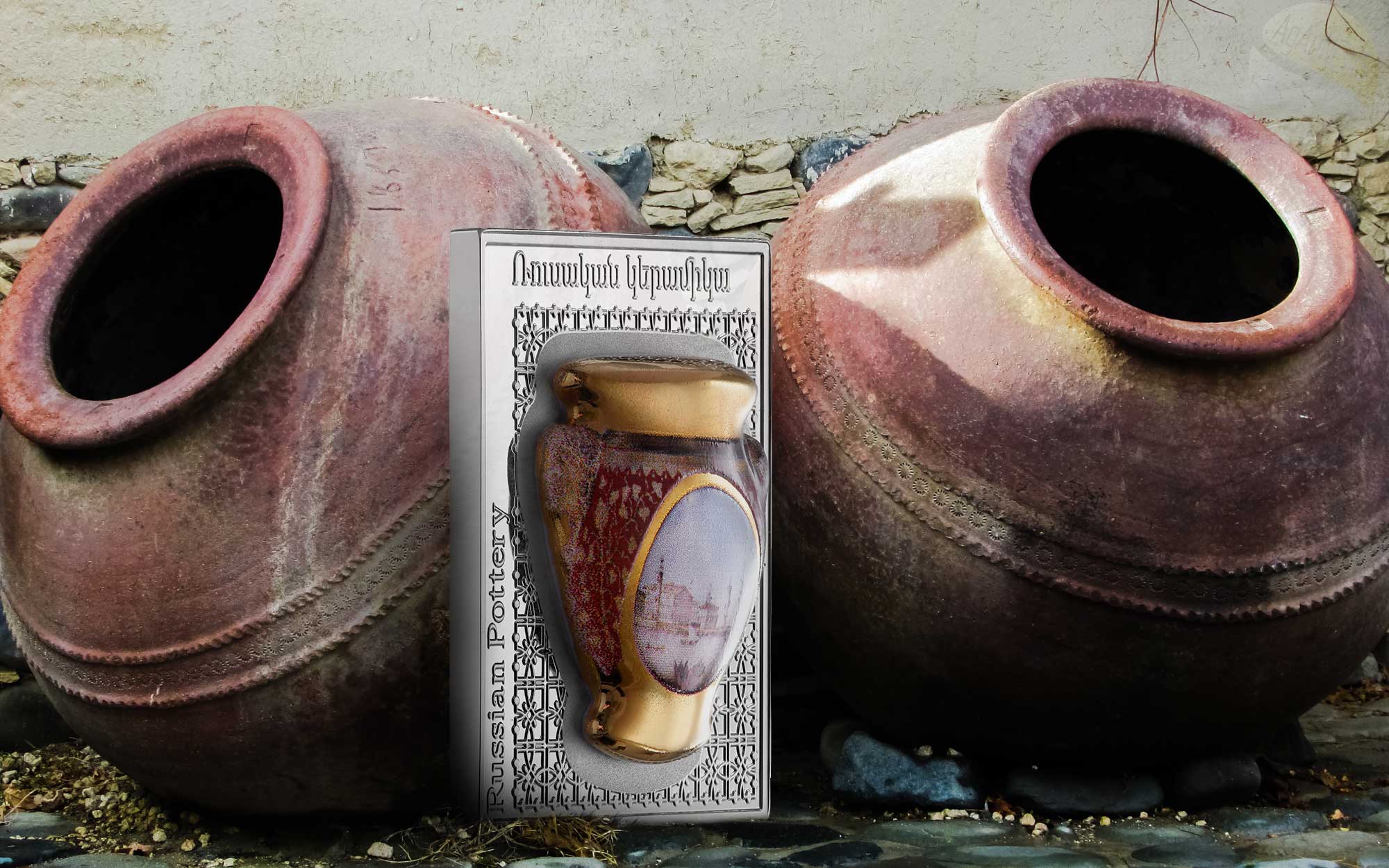
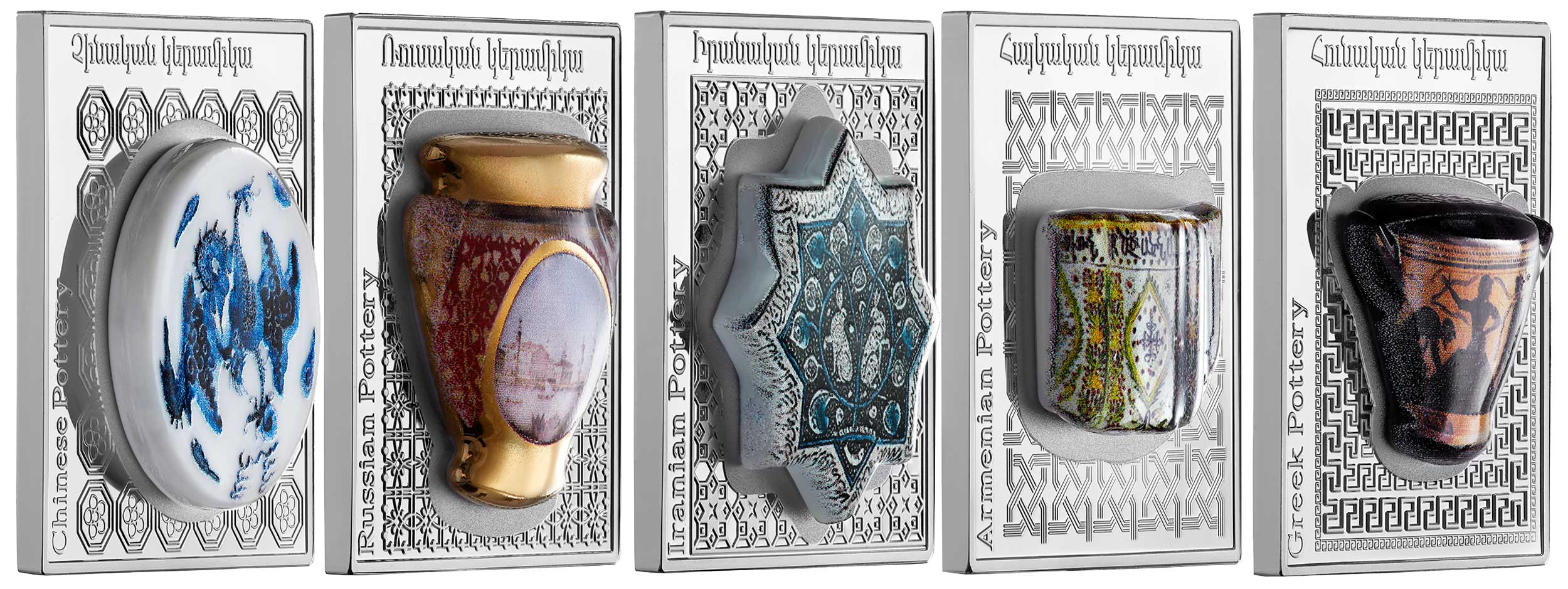
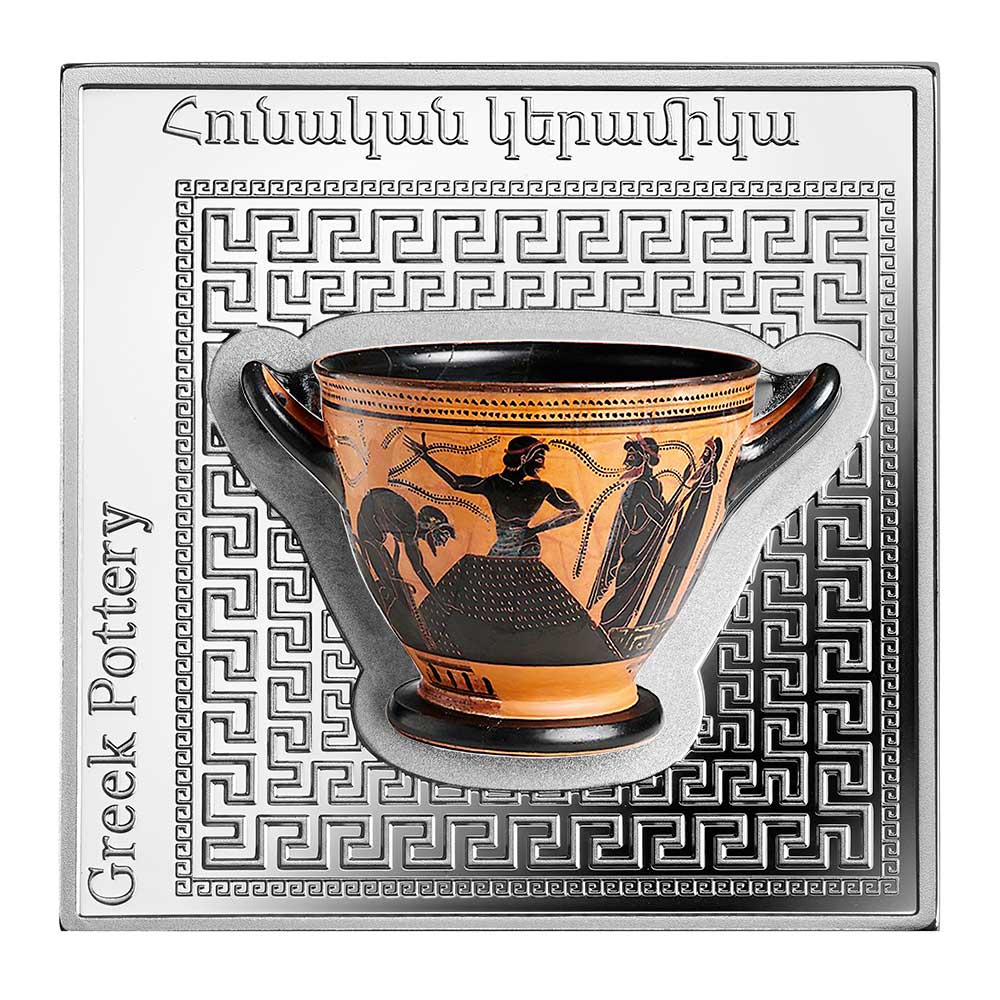
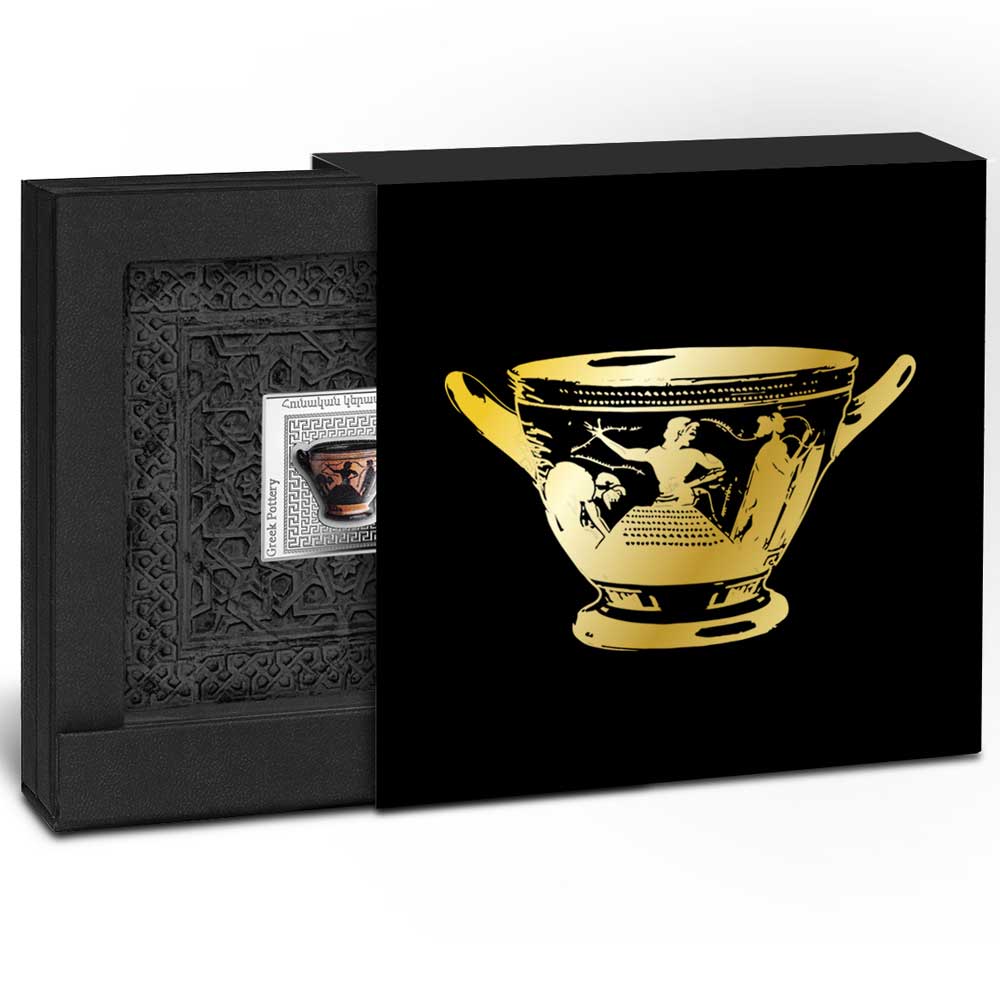
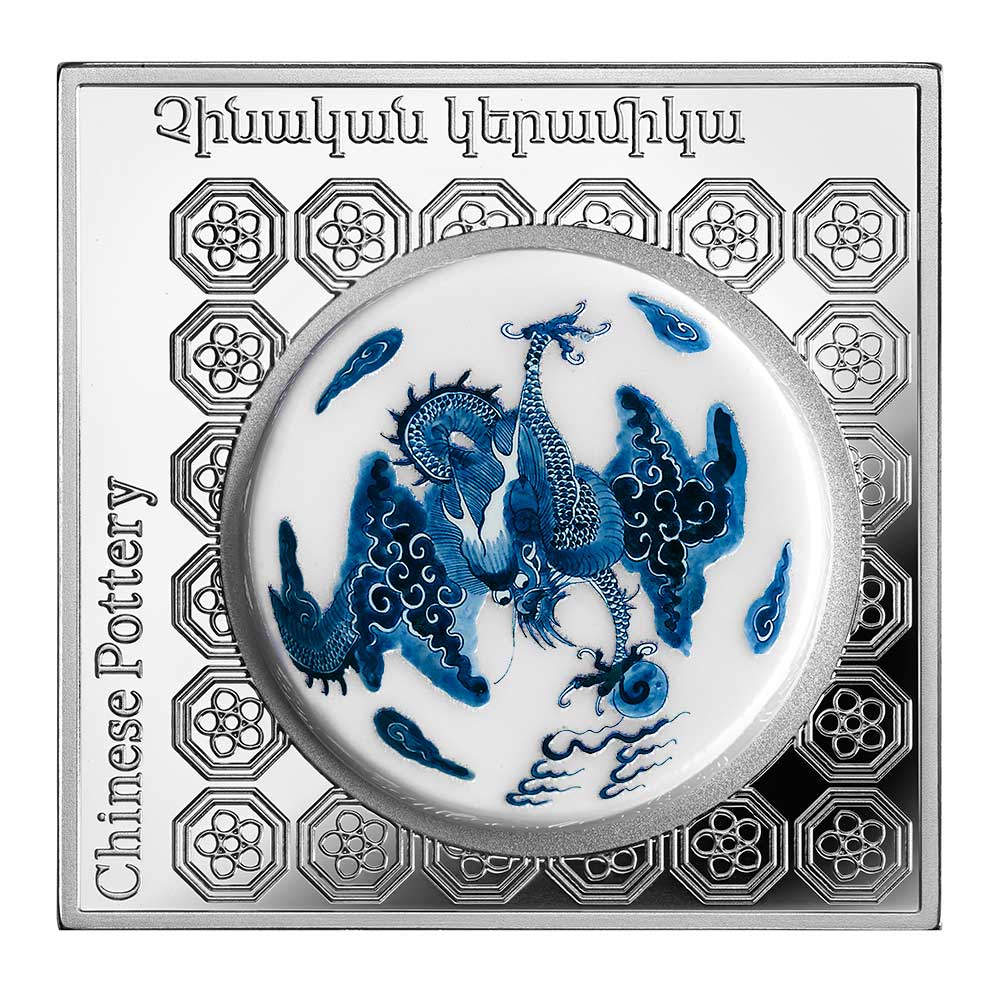

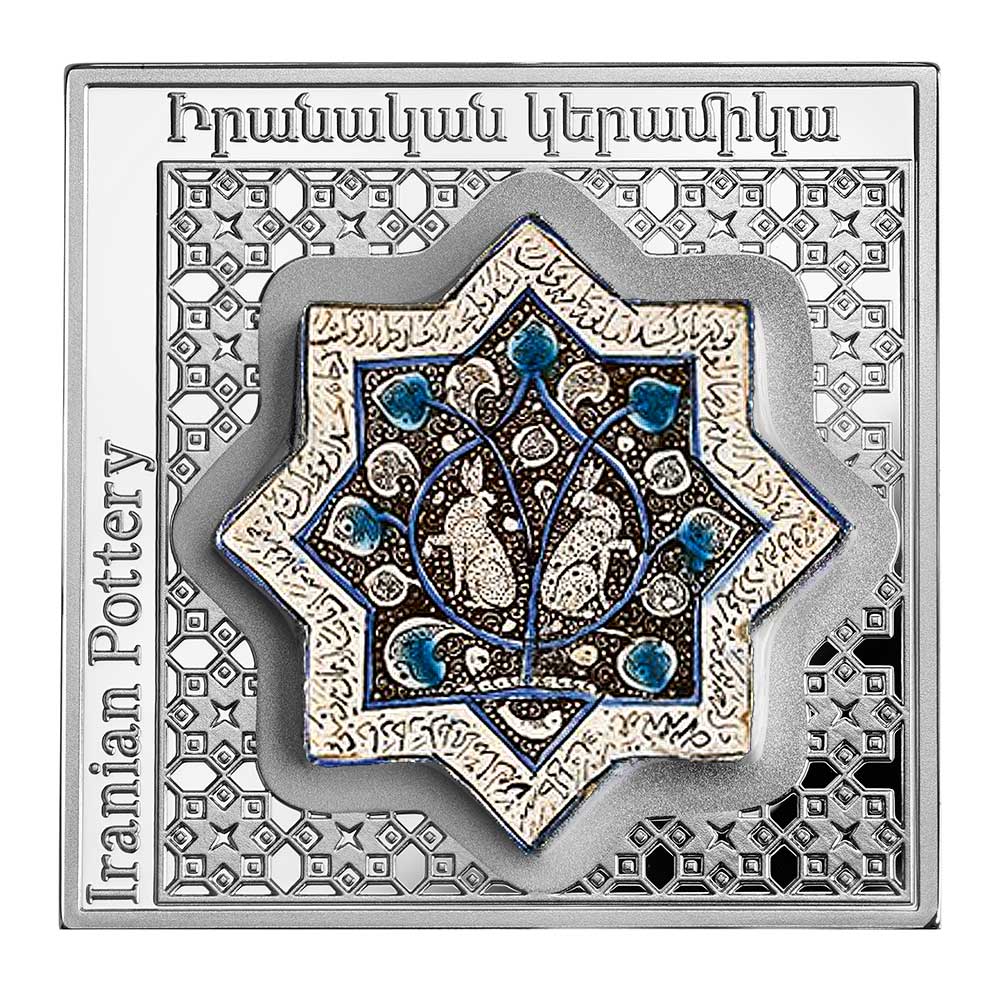
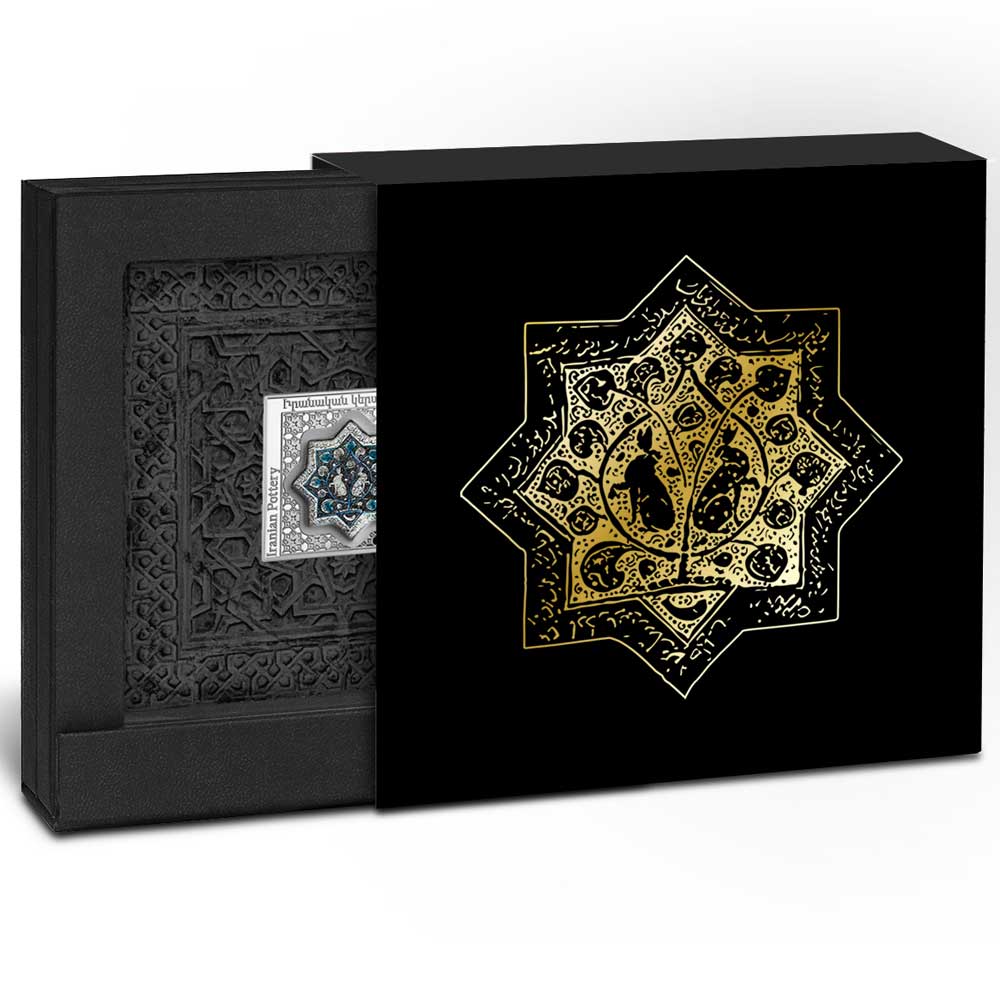
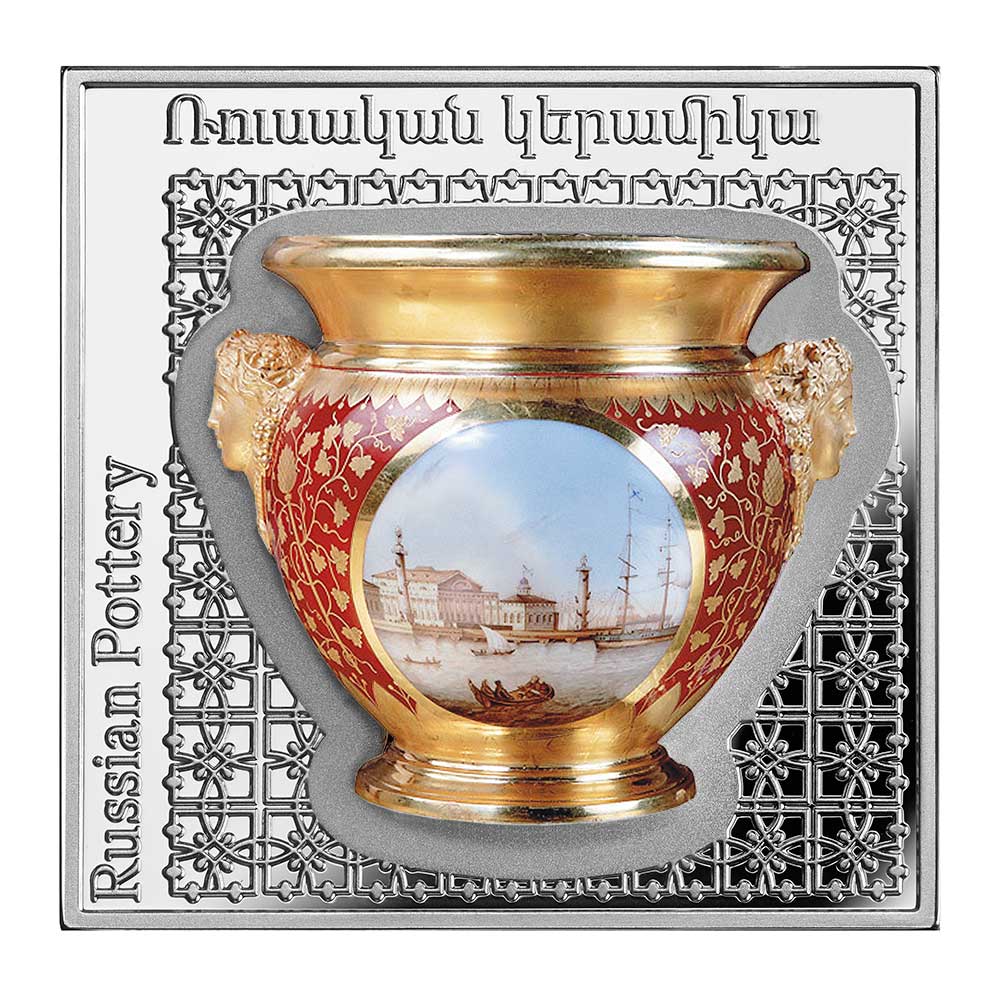
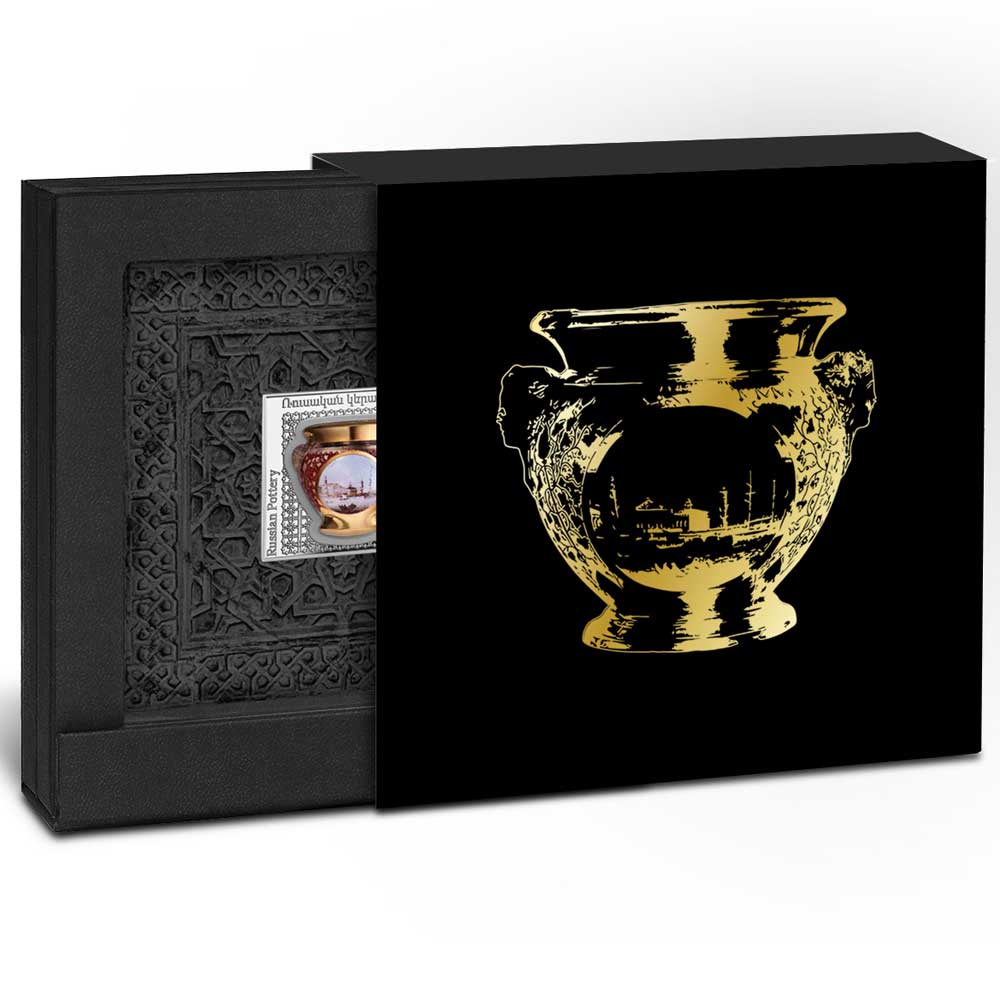

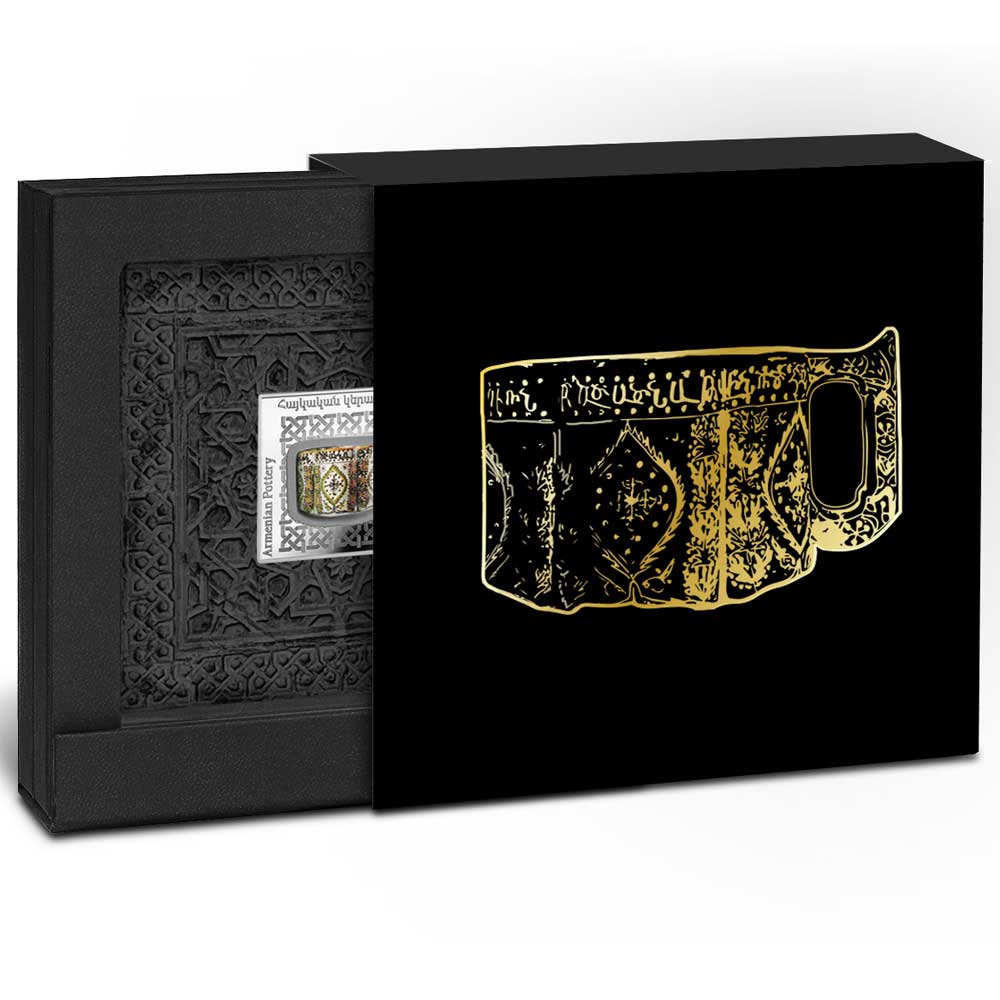
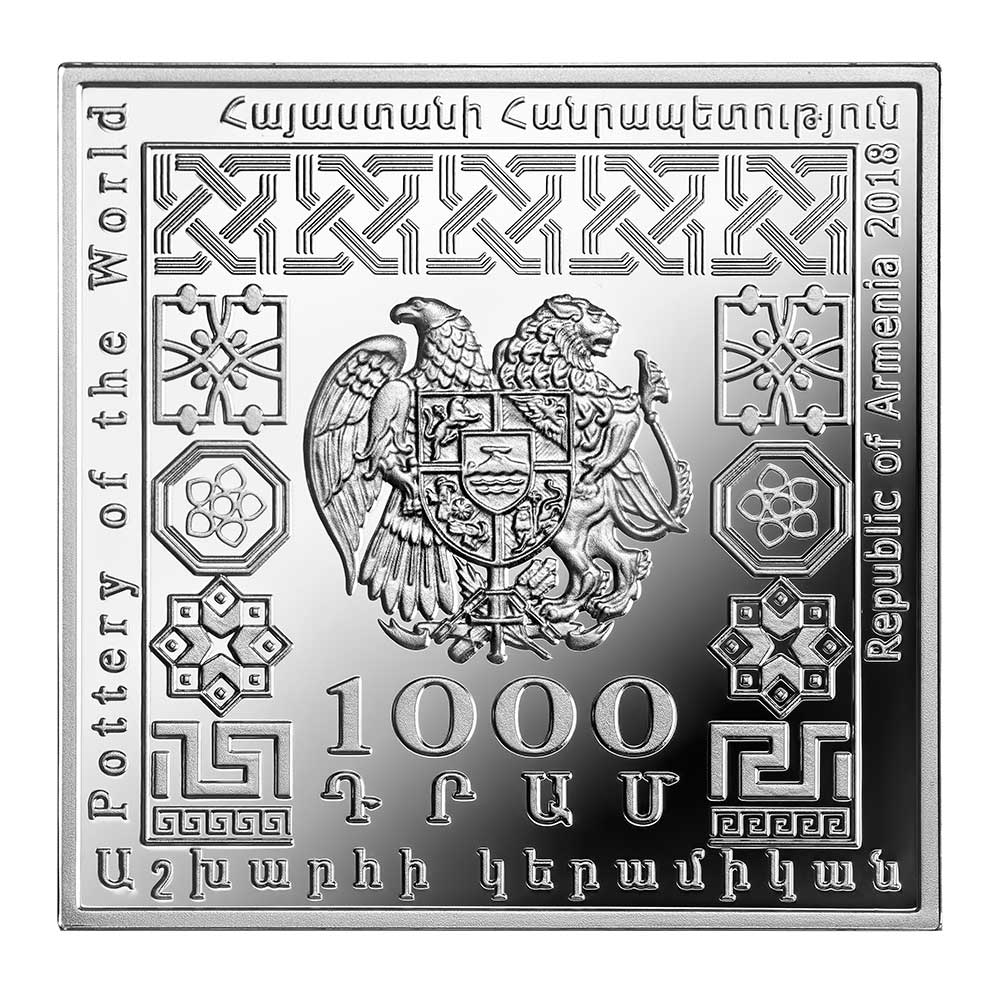
Leave A Comment